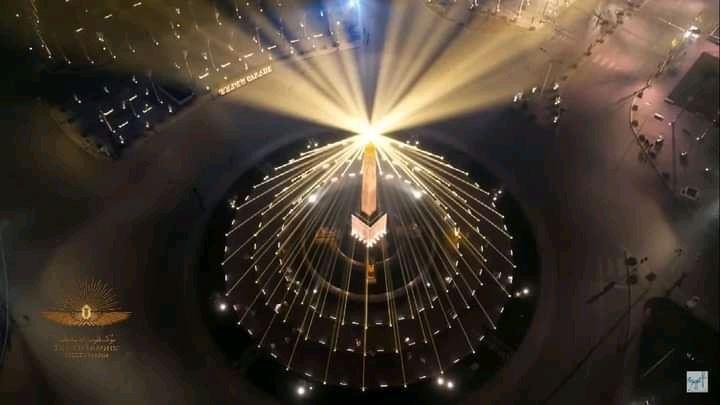
Egypt bore witness to an exceptional, grand event that it will likely never see again, as a majestic procession transported 22 mummies of some of the most famous kings and queens of ancient Egypt from Egyptian Museum in Tahrir to their permanent display in the National Museum of Egyptian Civilization in Fustat.
This serves an example of the reverence and pride Egypt holds in its own ancient history.
The goal of the event, ultimately, was to show Egypt’s respect towards its ancestors and their ancient civilization, one of the oldest in all of human history.
Preparing for the event:
The Ministry of Tourism and Antiquities has been carefully planning for this event since the very first day, paying the utmost attention in every detail of the event from the event’s name in Arabic and English, the logo, decorations, colors, the participants’ clothes, the state’s official musical bands, the official reception and carriages for transporting the royal mummies.
Not only were their songs specifically prepared for the event, several ancient ancient Egyptian words were uttered in music for the first time in ages, alongside other examples of ancient Egyptian music.
Most importantly, every aspect of the grand production was overseen and implemented by Egyptian hands.
Around 350 students, children and some of the most famous Egyptian artists alive participated in the event.
Students from the Faculties of Fine Arts, Applied Arts and Art Education at Helwan University played their part and beautified concrete walls located in separate places along the path of the procession by drawing artistic murals showcasing Egypt’s ancient history in a contemporary manner.
The students also beautified plant basins in the National Museum of Egyptian Civilization with drawings that reflect the forms of art seen in Egypt’s various eras, and adorned marble columns with gorgeous antique inscriptions alongside paintings of the museum’s content.
The logo:
The choice of logo itself was a carefully considered detail that the ministry took great efforts to get right.
Their goal was to strongly reflect the features of the event within the logo, with colors and design choices influenced by ancient Egypt.
The double colors of the logo – dark blue and gold – were directly lifted from ancient Egyptian styles.
The colors of the logo came in a double color, between dark blue and gold, which was inspired by the ancient Egyptian creed.
When did the preparation for the transfer begin?
Preparations for the transfer of the royal mummies began about a year and a half ago, starting with a comprehensive study that looked over the condition of each mummy.
Then came the packaging process, where they identified any weak points as a team of competent Egyptian conservators worked to strengthen those areas and wrap the mummies with the latest scientific methods.
The process of transferring royal mummies is carried out according to specific procedures that take into account all safety standards followed internationally regarding the movement of sensitive artifacts. This involved placing them in sterilization units equipped with the latest technologies, and then loading them onto carts specifically designed and equipped for this process to ensure control of all vibrations and keep the mummies safe.
The mummies received a military reception befitting their grandeur and prestige, with 21 honorary cannons fired at the National Museum of Egyptian Civilization in Fustat. Their route was lighted up and saw great development upon the orders of President Abdel Fattah al-Sisi, who urged the development of areas on the procession’s route from Tahrir Square to Fustat.
Edited translation from Al-Masry Al-Youm




